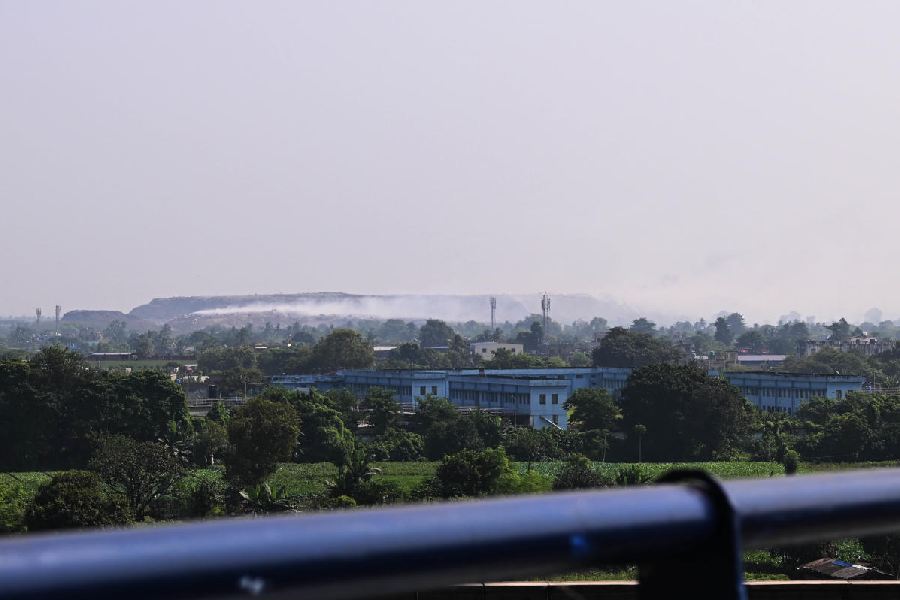Solid waste collected from households in Panihati, on the northern fringes of Kolkata, is being dumped at the Dhapa landfill site following objections from residents there to Panihati Municipality’s practice of dumping waste near their homes.
The vice-chairperson of the municipality told Metro the residents had been complaining that the stench and flies from the landfill site in Panihati were drifting into their homes and posing a threat to public health.
The crisis highlights the challenges faced by municipalities around large cities like Kolkata where the volume of solid waste generated has grown exponentially with an increase in population and people’s demands, but there is hardly any attempt to process or recycle the waste.
Panihati Municipality used to dump all kinds of waste at the landfill site there without segregating them, said an official of the civic body. If the waste is segregated and anything with value to produce something new is used, the volume of waste going to a dumping site will significantly reduce. The sites then will have a longer lifespan and the threat to public health will also lessen.
“The municipality on Friday started dumping waste at Dhapa. Vehicles carrying the waste will travel over 20km from Panihati to Dhapa every day. The arrangement will continue,” said an official of the state’s municipal affairs department.
“We will send waste to Dhapa every day. We had a century-old waste dumping site in Panihati. It is known as Ramchandrapur Bhagar. Residents have objected to dumping the waste there,” said Subhas Chakraborty, vice-chairperson of Panihati Municipality.
“There was a time when there used to be a buffer zone between the waste dumping site and houses. But in the late 1990s, land close to the dumping site was handed over for residential apartments,” said Chakraborty.
A civic official said about 170 tonnes of solid waste is generated in the 35 wards of Panihati Municipality every day. All of that will now be added to the waste dumped at Dhapa.
The Dhapa site is anyway filled to the brim, said an official of the Kolkata Municipal Corporation (KMC).
The Solid Waste Management Rules, 2016, mandate that municipal corporations nationwide start their waste segregation.
An expert in waste management said that if waste is segregated properly, only about 10 per cent of it should go to a dumping site. “Only the waste that cannot be used as raw material to produce something else should go to the dumping site,” said the
expert.
Wet waste — primarily kitchen waste — can be used to produce manure and bio-CNG, a type of environment-friendly fuel. Dry waste — some kinds of paper, plastic, jute and textile rags — can be used to produce electricity. Other types of plastic objects and metal items have use in recycling industry, said an official of the KMC.
“If civic bodies segregate waste and use it in composting or recycling, the mess in waste management can be resolved. But across India, the picture is similar. Towns near large cities are struggling to manage their waste,” said Brajesh Dubey, a professor of civil engineering at IIT Kharagpur, who specialises in solid waste management.






